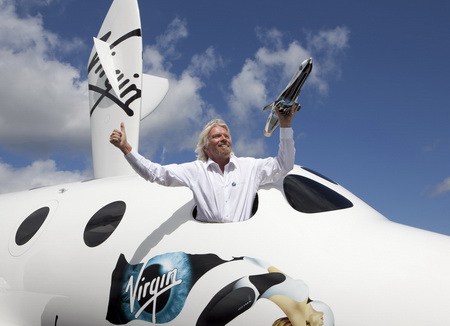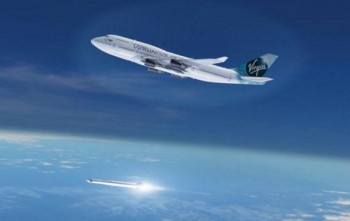December 7, 2015 – Airborne launch systems have been considered by aerospace operators for a number of years but the latest news may make this become almost an every day occurrence. Although Virgin Galactic is best known for its hybrid White Knight-SpaceShipTwo, the space tourism business hatched from the successful winning of the Ansari XPrize, the company, owned by Sir Richard Branson (seen below), is now seeking to become a rival to SpaceX using a different technology.
Although a tragic co-pilot error on a test flight caused SpaceShipTwo to crash leading to a hiatus in Virgin Galactic’s space tourism, the company has continued to move ahead with plans to launch satellites using LauncherOne, an air-launched two-stage rocket. The payload delivery system can handle up to 300 kilograms (660 pounds) launched into sun-synchronous near-Earth orbits and 450 kilograms (approximately 1,000 pounds) in equatorial orbits.
So how is Virgin Galactic managing this? Using a surplus 14-year-old Boeing 747-400 from its sister airline company and modifying it to support the hardware. The LauncherOne rocket is a two-stage reusable payload delivery system that when fully fueled weighs approximately 25,000 kilograms (55,000 pounds). The 747 will launch the booster from under its left wing where there has always been a place for an auxiliary fifth jet engine, although no current 747s fly with one. The rocket and payload are heavier than the jet engines used by 747s. That means the aircraft air-frame needs to be overhauled to support the additional weight. This retrofit is expected to be completed for test launches planned in 2017.
Each launch involves a crew of three who will take off to reach an altitude of 10,668 meters (35,000 feet) where LauncherOne will be released (see image below). After dropping from the aircraft the rocket’s single main stage engine will light providing 73,500 pounds of thrust. The initial burn is 15 minutes and designed to achieve a sub-orbital trajectory. A second burn by the upper stage provides 5,000 pounds of thrust and is intended to deliver the payload into low-Earth orbit. Both stages are liquid-fueled. LauncherOne is expected to be used by a builders of cubesats and micro satellites with multiple units deployed per launch bringing the per unit cost of getting to space down considerably. Current estimated costs to users is expected to be in the $10 million U.S. range.
Virgin Galactic is not alone in taking this approach to getting to low-Earth orbit. I have written in the past about Microsoft cofounder, Paul Allen, who has had similar plans using an aircraft built partly from 747 parts. His company, the latest iteration, called Vulcan Aerospace, has also been inspired by the 2004 success of SpaceShipOne. Scaled Composites, the same company involved with Virgin Galactic’s WhiteKnight and SpaceShipTwo, is also building the Vulcan aircraft launch platform. It’s code name is Stratolaunch and it will be the largest aircraft ever to fly.
A postscript:
Today’s posting is number 1,500 here at 21st Century Tech blog. That’s 1,500 over a period of six years and represents more than 2 million words. I thank all of my readers who have continued to inspire me to write and hope you keep on coming back and spreading the word.
And please don’t be shy about suggesting content for this site, or if inspired, writing your own submission and sending it to me at info@21stcentech.com or rosen.len@gmail.com. Once again, thank you.













